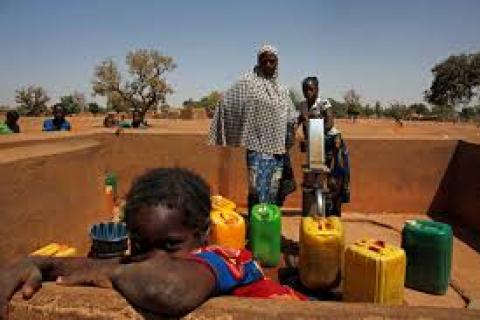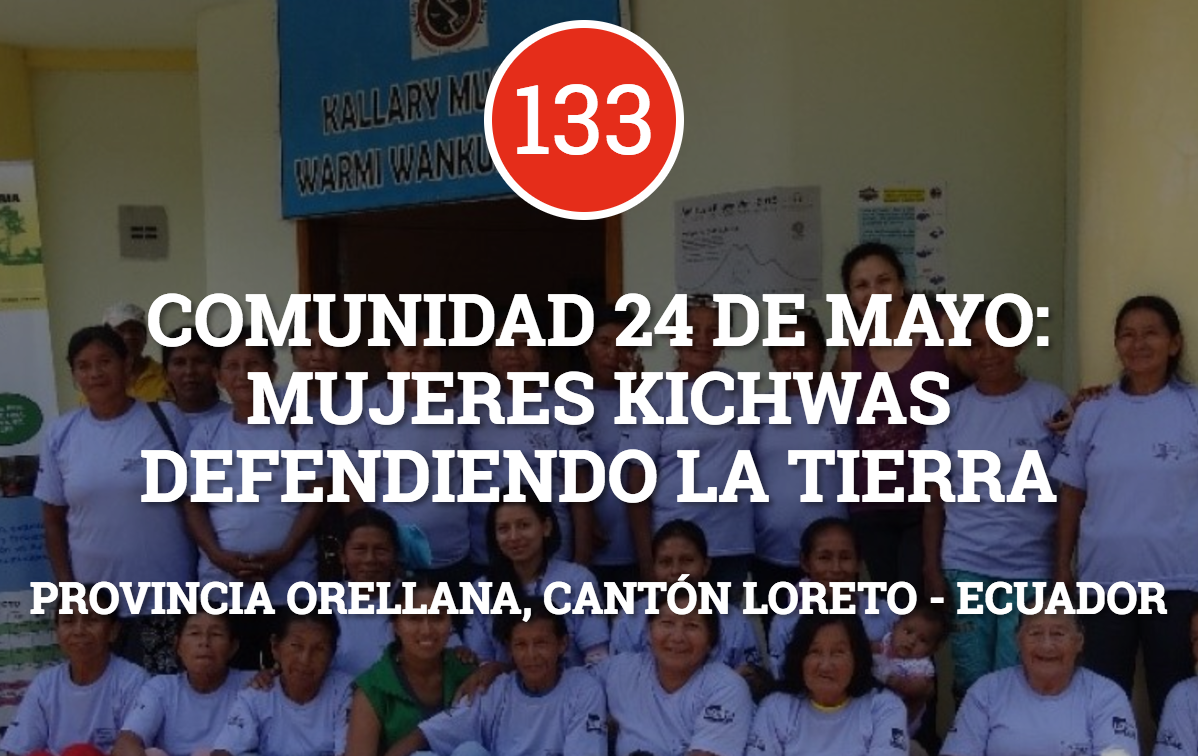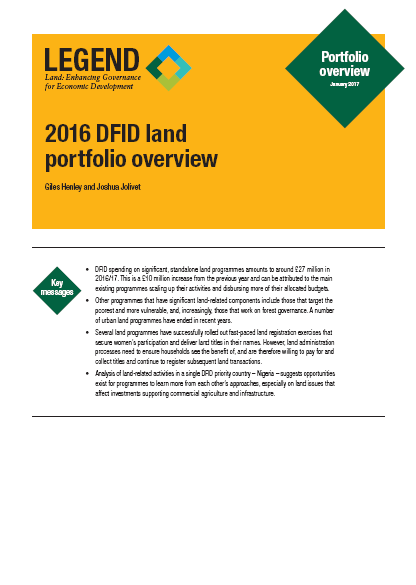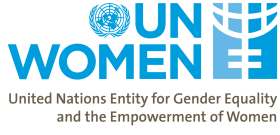
Proportion of countries where the legal framework (including customary law) guarantees women’s equal rights to land ownership and/or control
Last updated on 1 February 2022
This indicator is currently classified as Tier II. The Food and Agriculture Organization of the United Nations (FAO) is the main Custodian agency. UN Women and the World Bank are partner agencies.
Unit of measure: Articles present in primary and/or secondary legislation.
Why is this indicator important?
According to UN Women, "deep legal and legislative changes are needed to ensure women's rights. Stark gender disparities remain in economic and political realms." Discriminatory laws need to be reformed if women and girls are to be empowered with secure, equal rights to land. It will help women and girls achieve power and potential, secure food for their families, generate income, and sustain other livelihood needs. This includes both statutory and customary law. Together with 5.a.1, this indicator encourages countries to review and, where necessary, to strengthen existing policy and legal measures aimed at securing equal rights to land for women and men.
How is the indicator measured and monitored?
SDG indicator 5.a.2 measures the extent to which a country’s legal framework supports women’s ownership and/ or control over land including inheritance rights for women and girls. Progress towards the SDG target will be determined by the extent to which countries have incorporated internationally recognized standards, particularly from the Voluntary Guidelines on Responsible Governance of Tenure (VGGT) and the International Convention on the Elimination of Discrimination against Women (CEDAW), into their legal frameworks. Existing statutory laws are assessed against the six following proxies:
Proxy A: Joint registration of land compulsory or encouraged through economic incentives
Proxy B: Compulsory spousal consent for land transactions
Proxy C: Women’s and girls’ equal inheritance rights
Proxy D: Allocation of financial resources to increase women’s ownership and control over land
Proxy E: In legal systems that recognise customary land tenure, existence of explicit protection of the land rights of women
Proxy F: Mandatory quotas for women’s participation in land management and administration institutions
According to the metadata document, the legal and policy framework encompasses the Constitution, primary and secondary legislation as well as existing policies. Control over land is defined as the ability to make decisions over land, its usage and benefits. In addition to legally acquired land, land ownership in systems where land is owned by the state refers to long-term leases, tenancy, or use rights, to name but a few. The indicator also considers customary legal systems that have been recognised by the state and regulated in national law. It also takes into account the rights of partners in consensual unions when the legal framework recognises such unions.
Data sources include publicly available legal instruments on land (including land registration), family, marriage, inheritance, and gender equality. Only the proxies found in the legally binding primary and secondary legislations are considered in the reporting, but the methodology encourages countries to also review bills, and policies to monitor progress against the 6 proxies. Once the legal assessment is completed, the officially designated national institution(s) responsible for SDG indicators submits a reporting questionnaire to FAO for a quality check, to ensure that the assessment was carried out in accordance with the reporting methodology. Once the process is completed, the national institution officially submits its report to FAO. In 2019 and 2020, 36 countries have reported on this indicator.
As this is one of the few legal indicators in Agenda 2030, one of the key challenges in the reporting lies with the identification of national institutions responsible for SDG indicator 5.a.2. Owing to the nature of this indicator, FAO recommends the nomination of high-level focal points within institutions with a mandate on land, agriculture, justice or gender equality. The responsible institution(s) for SDG indicator 5.a.2 should then nominate a legal expert to carry out the assessment in accordance with the reporting methodology. Another methodological challenge concerns the assessment and computation of heterogenous customary tenure systems.
By Anne Hennings, peer-reviewed by Naomi Kenney, FAO; Martha Osorio, FAO; Everlyne Nairesiae, GLII Coordinator at the Global Land Indicators Initiative (GLII) at GLTN, Un-Habitat and Clinton Omusula, Land Data and Knowledge Management Specialist at the Global Land Indicators Initiative (GLII) at GLTN, UN-Habitat.
Official indicator data
The indicator “measures” the level to which a country’s legal framework supports women’s land rights, by testing it against six proxies drawn from international law and internationally accepted good practices. Currently, data is only available for proxy E: In legal systems that recognise customary land tenure, existence of explicit protection of the land rights of women. It is given on a scale from 1 to 6, where: 1 - there is no evidence of guarantees of gender equality in land ownership and/or control in the legal 6 - highest levels of guarantees of gender equality in land ownership and/or control in the legal framework * Select "year" below to see the most recent data for more countries.
Other related indicators on Land Portal
In addition to the official indicator data, the following indicators provide information concerning women’s tenure security, land rights, and access to land.
Learnings on gender from the Congo Basin
Improving how we work for – and with – indigenous and local women in their communities
As a human rights organisation, gender justice is a fundamental principle of our work, and we have long been conscious of, and sought to address, the barriers to effective participation in decision-making by women, as well as the other human rights violations they may face on account of their gender.
Demystifying Data: Data That Empowers
A data story from women in a semiarid region of Brazil
*This story was written by the following women: Ducicleide Maria da Silva, Gigliola Silva Araújo, Ianka Sayonara da Silva, Josefa Ferreira da Silva, Maria do Carmo da Conceição Carvalho, Maria Karoline Policarpo Silva, Manuella Donato, Mariana de Albuquerque Vilarim and Thalya Carla Vieira de Lima and Patricia Maria Chaves . It was translated by Sonia Jay Wright.*
It’s time to recognise the land rights gender deficit
The plight of women has largely been ignored, not only by local officials and lawmakers, but also by the way in which data about land rights is understood and processed
When Rajkumari Devi’s husband died 12 years ago, the world that centred on the mud hut they shared in a village in north India fell apart. Reeling from the loss of her husband, she was unable to secure title to her home and the scrap of farmland nearby that they had worked together.
Empowering women means taking a stand for environmental rights
As the Samburu fight for control over natural resources, Samburu women are demanding to be heard
The Samburu, a pastoralist indigenous tribe from the vast semi-arid and arid rangelands of Northern Kenya, face many of the same challenges as other indigenous communities around the world. They have few opportunities to influence or manage activities that affect their environment, and insufficient information and understanding of their entitlements and rights when large development and infrastructure projects come to do business on their lands.
Pagination
Building Evidence on Rural Women Struggles for Land Rights in Tanzania
Land is one of the terrains of struggle for most rural women in Africa because of its importance in sustaining rural livelihoods, and social-cultural and geopolitical factors that hinder women from enjoying land rights. Even when there are progressive land laws, as it is for Tanzania, women have not really enjoyed their rights.
Comunidad 24 de mayo: Mujeres Kichwas defendiendo la tierra
"Desde la antigüedad las mujeres soñamos defender la tierra para un futuro próspero, donde todos tengamos los mismos derechos sea hombre o mujer"(Antonia Grefa, Comunidad Veinticuatro De Mayo)
Entrevista sobre Tierra y territorios desde el punto de vista de mujeres y varones (Raquel Reynoso, SER)
2016 DFID Land Portfolio Overview
The Portfolio Overview provides a global overview of DFID's programmes working on land issues and highlights lessons and trends emerging from major land programmes over recent years.
From Risk and Conflict to Peace and Prosperity
Amid the realities of major political turbulence, there was growing recognition in 2016 that the land rights of Indigenous Peoples and local communities are key to ensuring peace and prosperity, economic development, sound investment, and climate change mitigation and adaptation.
Pagination
![]()

Undertake reforms to give women equal rights to economic resources, as well as access to ownership and control over land and other forms of property, financial services, inheritance and natural resources, in accordance with national laws
Indicator details
The indicator is conceptually clear, has an internationally established methodology and standards are available, but data is not regularly produced by countries.
Key dates:












